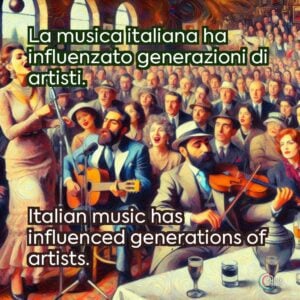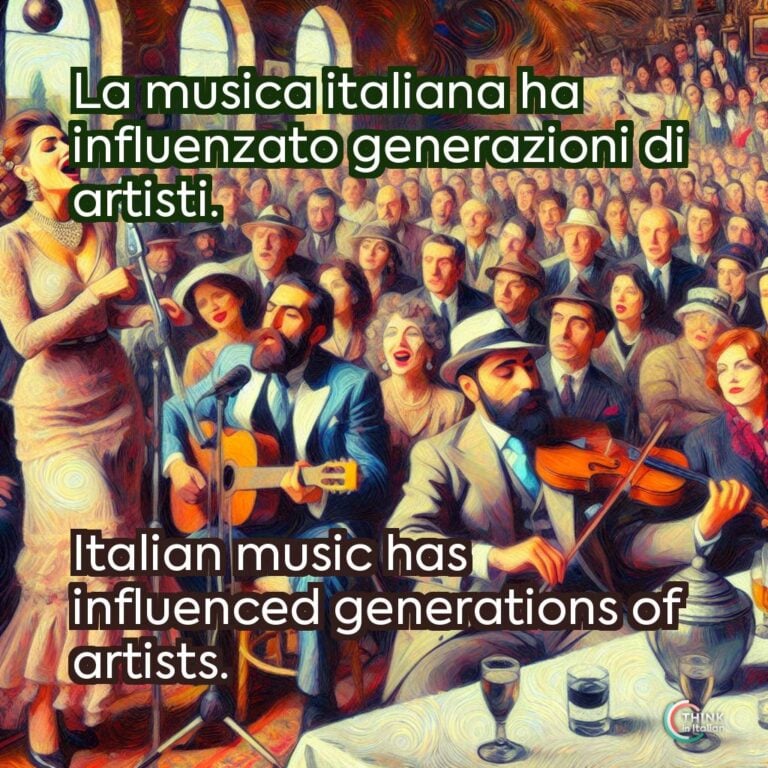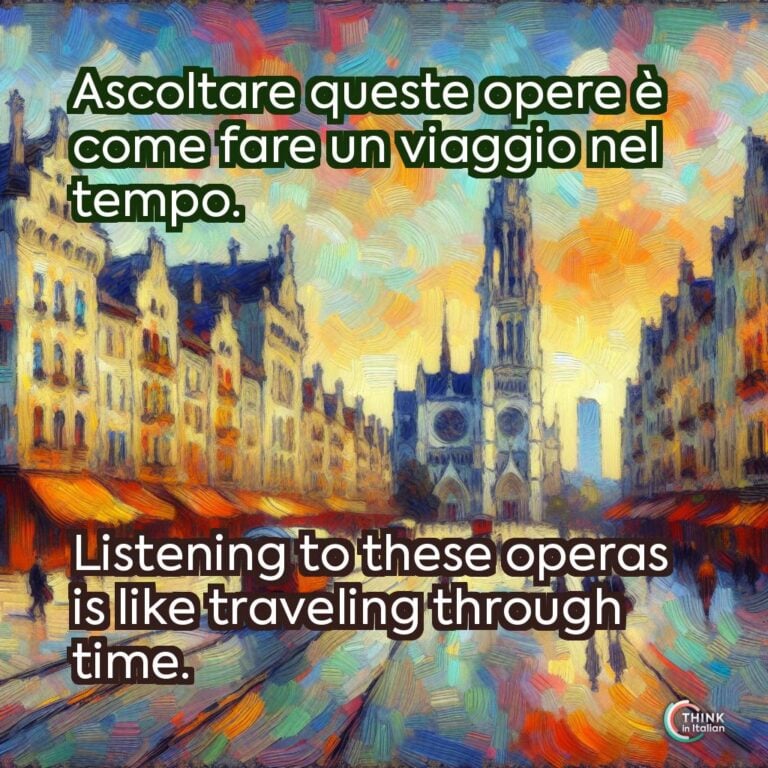Italian Opera
Italian opera holds a special place in the world of music, combining powerful melodies, dramatic storytelling, and passionate performances that transcend time and borders.
Its linguistic impact is as important, given the numerous Italian loanwords that were born in this field and are now used all over the world; it offers a timeless journey into the depths of human emotion, artistic genius, and linguistic evolution
Italian opera began in the late 16th century in Florence, emerging as a dramatic fusion of music and theater. These early performances were private courtly entertainments used to celebrate special occasions.
Only during the 18th century opera became a public phenomenon. It was exported to England, and officially moved out of aristocratic salons to reach public theaters.
The 19th century is opera’s golden age, marked by the contributions of Rossini, Bellini, Donizetti, Verdi, and Puccini. Their works became iconic, addressing themes of love, tragedy, and heroism.
In this article, I will guide you through the history, the most famous works, and the enduring appeal of Italian opera, to offer you a glimpse into the magic and legacy of this timeless genre.
The Most Famous Italian Opera Songs
“Nessun Dorma” from Turandot by Giacomo Puccini
The song is sung by Calaf, and is a triumphant declaration of hope as he solves Princess Turandot’s riddles to win her love. Its soaring melody builds to the climactic vincerò (I will win), a moment that never fails to stir emotions.
Luciano Pavarotti’s rendition at the 1990 FIFA World Cup immortalized it as a global anthem of resilience.
“La Donna è Mobile” from Rigoletto by Giuseppe Verdi
This was sung by the Duke of Mantua, and reflects his carefree and flirtatious nature. Its jaunty rhythm and unforgettable melody make it one of opera’s most recognizable pieces.
It permeated pop culture, appearing in movies, advertisements, and even cartoons.
“Va, Pensiero” from Nabucco by Giuseppe Verdi
Known as the “Chorus of the Hebrew Slaves”, it captures the yearning for freedom and homeland. This piece became an anthem for Italian unification and continues to resonate as a symbol of resistance and unity.
“O Mio Babbino Caro” from Gianni Schicchi by Giacomo Puccini
The song is a tender plea from a daughter to her father for permission to marry the man she loves. Its heartfelt melody conveys universal themes of love and longing.
“Largo al Factotum” from The Barber of Seville by Gioachino Rossini
Figaro introduces himself in a high-energy aria, boasting of his talents and wit. The rapid-fire delivery and playful melody make it a crowd favorite and a showcase for vocal agility.
“Un Bel Di Vedremo” from Madama Butterfly by Giacomo Puccini
This song captures a woman’s unwavering hope for her lover’s return. This haunting melody epitomizes operatic tragedy, moving audiences with its raw vulnerability.
“Libiamo ne’ Lieti Calici” from La Traviata by Giuseppe Verdi
Also known as the “Brindisi” or “Drinking Song”, it celebrates love and life at a lively party. Its infectious rhythm and celebratory tone make it a must-hear at Italian gatherings.
“Vissi d’Arte” from Tosca by Giacomo Puccini
Tosca reflects on her devotion to art and love, questioning her suffering. This aria’s emotional intensity leaves a lasting impact.
“Funiculì, Funiculà” by Luigi Denza
Originally a Neapolitan folk tune, this cheerful melody celebrates a funicular railway. Its joyful spirit has earned it a place in opera performances, inviting audiences to sing along.
Appreciate the Italian Opera
Italian opera’s magic lies in its ability to transcend time, touching hearts across generations. There are several reasons as to why it continues to captivate people all around the word:
- the stories explore universal emotions, like love, betrayal, hope, and sacrifice, which that resonate deeply with audiences.
- the music reflects unparalleled craftsmanship and innovation.
- the combination of music, acting, and stagecraft creates immersive experiences that transport audiences.
- Italian opera has influenced not only classical music but also cinematic scores, popular music, and cultural movements.
With this in mind, we all agree that Italian opera is more than an art form: it is a testament to the power of music to convey the inexpressible. Dive into this rich tradition, and discover why these songs remain as moving and relevant today as they were centuries ago.






